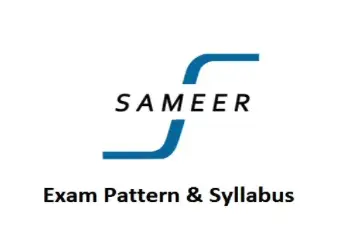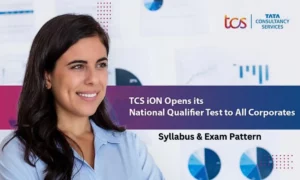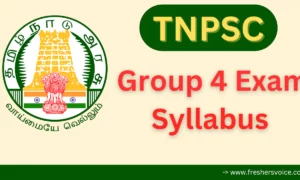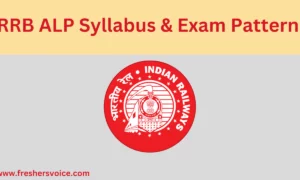The exam pattern and syllabus for the posts of Scientist B & Scientist C is released. Given the nature of the exam being competitive and tough to crack, applicants should focus to learn each and every topic given to come out with flying colours. Continue reading to know the detailed syllabus as well as pattern for the examination.
Current Opportunities at SAMEER:
SAMEER exam notification for Scientist B & Scientist C was released on 20 February 2023. There are about 21 vacancies available. Candidates with B.E /B.Tech/ M.E /M.Tech can apply for the job. Basic pay ranges from Rs. 56100 – 208700/- Per month. Freshers can also apply for the job. Selected candidates will be placed all across India. Applications will be available online from 04 March 2023. Click on the link SAMEER Recruitment 2023 to know more details and to apply. Last date to submit the application would be 08 April 2023.
 SAMEER Exam Pattern 2023 (Scientist B & Scientist C):
SAMEER Exam Pattern 2023 (Scientist B & Scientist C):
Applied candidates should appear for The written test / Computer Based Test which is based on GATE syllabus and pattern. Minimum marks to obtain for qualifying for the next round -General (50%), OBC (40%) and SC/ST( 30%). The pattern comprises the following areas.
- General Aptitude ( 15 marks)
- Engineering Mathematics ( 15 marks)
- Core subject Questions ( 70 marks)
SAMEER Syllabus 2023 ( Scientist B & Scientist C)
As per the Pattern & Syllabus of GATE, the core subjects for SAMEER Examination are as follows:
- For Scientist ‘B’ (EL) Code – Electronics and communication engineering (EC)
- For Scientist ‘B’ (AS) Code – STBA Atmospheric sciences (XE-H)
For Scientist ‘B’ (EL) Code: Electronics and communication engineering
Networks, Signals and Systems
- Network solution methods: nodal and mesh analysis; Network theorems: superposition, Thevenin and Norton’s, maximum power transfer; Wye‐Delta transformation; Steady state sinusoidal analysis using phasors; Time domain analysis of simple linear circuits; Solution of network equations using Laplace transform; Frequency domain analysis of RLC circuits
- Linear 2‐port network parameters: driving point and transfer functions; State equations for networks.
- Continuous-time signals: Fourier series and Fourier transform representations, sampling theorem and applications
- Discrete-time signals: discrete-time Fourier transform (DTFT), DFT, FFT, Z-transform, interpolation of discrete-time signals
- LTI systems: definition and properties, causality, stability, impulse response, convolution, poles and zeros, parallel and cascade structure, frequency response, group delay, phase delay, digital filter design techniques.
Electronic Devices
- Energy bands in intrinsic and extrinsic silicon; Carrier transport: diffusion current, drift current, mobility and resistivity; Generation and recombination of carriers; Poisson and continuity equations; P-N junction, Zener diode, BJT, MOS capacitor, MOSFET, LED, photo diode and solar cell; Integrated circuit fabrication process
Analog Circuits
- Small signal equivalent circuits of diodes, BJTs and MOSFETs; Simple diode circuits: clipping, clamping and rectifiers; BJT and MOSFET amplifiers: Single-stage biasing, bias stability, mid frequency small signal analysis and frequency response; multi-stage, differential, feedback, power and operational; Simple op-amp circuits; Active filters; Sinusoidal oscillators: criterion for oscillation, single-transistor and op- amp configurations; Function generators, wave-shaping circuits and 555 timers; Voltage reference circuits; Power supplies: ripple removal and regulation.
Digital Circuits
- Number systems; Combination circuits: Boolean algebra, minimization of functions using Boolean identities and Karnaugh map, logic gates and their static CMOS implementations, arithmetic circuits, code converters, multiplexers, decoders and PLAs
- Sequential circuits: latches, flip‐flops, counters, shift‐registers and finite state machines
- Data converters: sample and hold circuits, ADCs and DACs
- Semiconductor memories: ROM, SRAM, DRAM
- 8-bit microprocessor (8085): architecture, programming, memory and I/O interfacing.
Control Systems
- Basic control system components; Feedback principle; Transfer function; Block diagram representation; Signal flow graph; Transient and steady-state analysis of LTI systems; Frequency response; Routh-Hurwitz and Nyquist stability criteria; Bode and root-locus plots; Lag, lead and lag-lead compensation; State variable model and solution of state equation of LTI systems.
Communications
- Random processes: autocorrelation and power spectral density, properties of white noise, filtering of random signals through LTI systems
- Analog communications: amplitude modulation and demodulation, angle modulation and demodulation, spectra of AM and FM, superheterodyne receivers, circuits for analog communications
- Information theory: entropy, mutual information and channel capacity theorem
- Digital communications: PCM, DPCM, digital modulation schemes, amplitude, phase and frequency shift keying (ASK, PSK, FSK), QAM, MAP and ML decoding, matched filter receiver, calculation of bandwidth, SNR and BER for digital modulation; Fundamentals of error correction, Hamming codes; Timing and frequency synchronization, inter-symbol interference and its mitigation; Basics of TDMA, FDMA and CDMA.
Electromagnetics
- Electrostatics; Maxwell’s equations: differential and integral forms and their interpretation, boundary conditions, wave equation, Poynting vector
- Plane waves and properties: reflection and refraction, polarization, phase and group velocity, propagation through various media, skin depth
- Transmission lines: equations, characteristic impedance, impedance matching, impedance transformation, S-parameters, Smith chart
- Waveguides: modes, boundary conditions, cut-off frequencies, dispersion relations; Antennas: antenna types, radiation pattern, gain and directivity, return loss, antenna arrays; Basics of radar; Light propagation in optical fibers.
For Scientist ‘B’ (AS) Code – Atmospheric sciences
- Fundamental of Meteorology, Thermal structure of the atmosphere and its composition, Radiation Balance and Laws, Wind Belts, Monsoon, Climate. Atmospheric Thermodynamics. Hydrostatic equilibrium and: Hydrostatic equation, variation of pressure with height, geopotential, Tropical convection. Atmospheric Electricity. Cloud Physics. Observation Techniques of the Atmospheric Properties.
- Fundamental equations. Pressure, gravity, centripetal and Coriolis forces, continuity equation in Cartesian and isobaric coordinates, Scale analysis, inertial flow, geostrophic and gradient winds, thermal wind, vorticity. Atmospheric turbulence, baroclinic instability. Atmospheric Waves.
- Tropical meteorology: Trade wind inversion, ITCZ; monsoon trough tropical cyclones, their structure and development theory; monsoon depressions; Climate variability and forcings; Madden-Julian oscillation (MJO), ENSO, QBO (quasi-biennial oscillation) and sunspot cycles. Primitive equations of Numerical Weather Prediction. General Circulation and Climate Modelling.
- Synoptic weather forecasting, prediction of weather elements such as rain, maximum and minimum temperature and fog. Data Assimilation.
These are the exam pattern and syllabus of SAMEER Recruitment 2023 for the post of Scientist – ‘B’/ Scientist – C. Take a look and start preparing every topic without leaving anything behind to secure desired results. Try to understand the exam pattern and syllabus fully Before starting to prepare for the examination. To know more about the examination and other details, Click Here and get a look!



